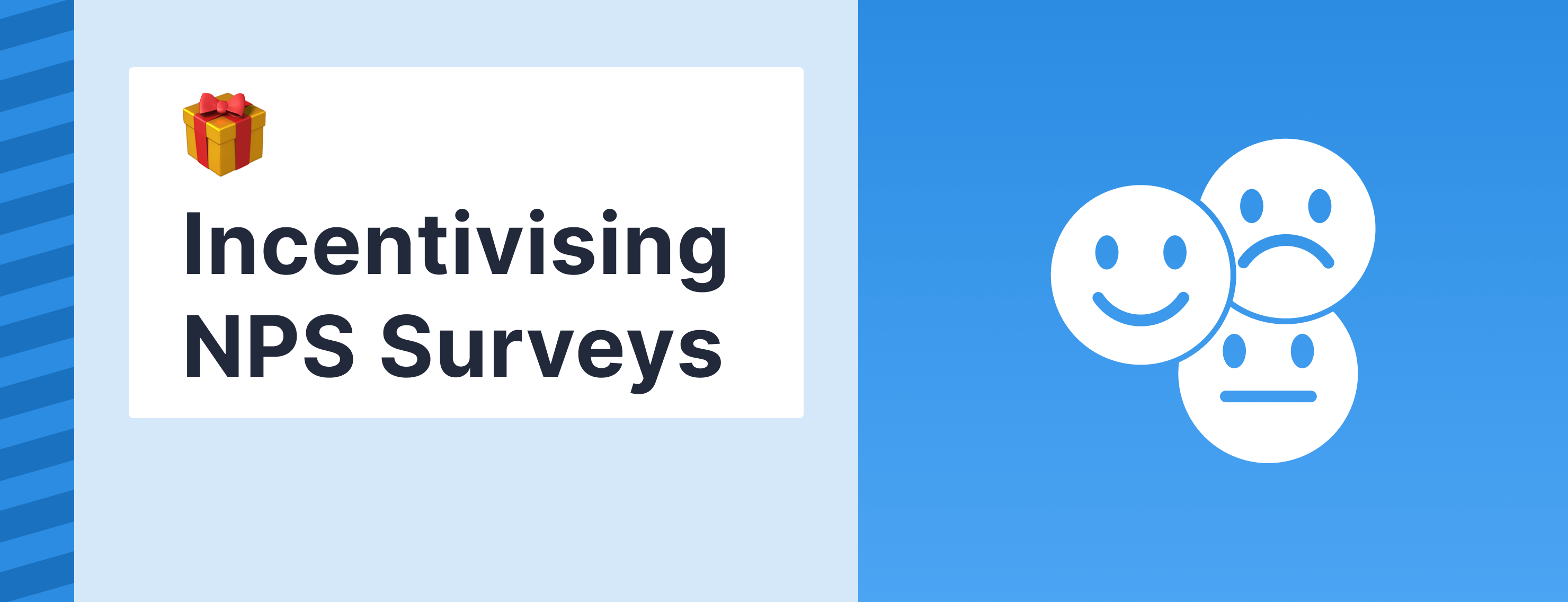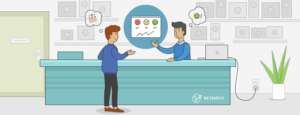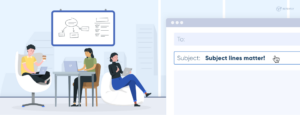Table of Contents
The debate over incentivizing NPS surveys has reached a boiling point in boardrooms across industries. On the one hand, offering rewards for survey participation promises to boost response rates and provide a broader range of customer feedback. On the other hand, it might lead to skewed data, where customers are more motivated by the rewards than by sharing their true feelings.
As companies try to find the right balance, the question remains: do incentives compromise the authenticity of feedback that drives critical business decisions? This article explores the pros and cons of using NPS survey incentives, and offers some insights to help you decide if this approach aligns with your goal of gathering genuine, actionable customer insights.
Key Takeaways
- Incentives can significantly increase NPS survey participation but risk introducing bias. Careful design of incentive structures is essential to preserve feedback authenticity.
- While monetary rewards can boost response rates, non-monetary and hybrid incentives may strike a better balance. Businesses must weigh the cost against data quality.
- To balance incentives with genuine feedback, focus on clear communication, non-monetary rewards and thoughtful survey design.
- Continuously assess whether the benefits of incentivizing NPS surveys outweigh the potential risks. Consider running pilot programs to test different approaches.
Understanding Incentives in NPS Surveys
NPS surveys are integral to understanding customer satisfaction and predicting business growth. They give actionable insights by measuring the likelihood of customers recommending a company’s products or services to others. The key to their effectiveness lies in gathering authentic feedback, which helps you assess loyalty and identify areas for improvement. However, ensuring high response rates can be challenging, which is why some companies consider incentivizing survey participation.
To attract more participants, businesses often use three types of incentives:
- Monetary incentives include cash, gift cards, or coupons with clear financial value. Research shows that monetary rewards, particularly cash, are the most effective at boosting participation rates. However, there is a threshold beyond which increasing the monetary value does not help. When deciding on the type and amount of incentive, it’s important to consider your budget, the distribution method and your target audience. For instance, offering a high-value cash incentive might be necessary to engage decision-makers, whereas a smaller reward might suffice for students.
- Non-monetary incentives are items that don’t have a direct cash value but are still appealing, such as branded merchandise, informational brochures, or charitable donations made on behalf of the participant. These incentives may not increase response rates as effectively as monetary rewards, but they can be succesful if if they align with your audience’s values or interests. For example, offering exclusive industry reports or invitations to a networking event could resonate well with professionals.
- Hybrid incentives combine monetary and non-monetary rewards to attract more survey participants. For instance, you might run a sweepstakes, where participants have a chance to win a substantial prize, such as a large gift card, in addition to smaller guaranteed rewards.
Advantages of Using Incentives
Recent research shows just how effective incentives can be for increasing survey response rates. A study by Oxford Academic reveals that offering cash or non-cash rewards upfront can increase response rates by 19.1% and 7.9%, respectively, whereas incentives promised after survey completion have little impact.
Meanwhile, BMC Medical Research Methodology highlights that monetary incentives alone can double the chances of receiving completed surveys, with a 50% increase in response rates even without follow-up reminders.
Another study found that combining monetary incentives with two follow-up mailouts can push response rates above 60%, particularly in surveys targeting the general public.
Beyond the numbers, incentives lead to:
- Increased Response Rates: In a marketplace crowded with surveys, incentives help yours stand out. Offering discounts, gift cards, or exclusive content, grabs attention and significantly boosts response rates. This means more voices and perspectives, translating into a more reliable dataset. With a larger pool of responses, businesses can make smarter, data-driven decisions that better align with customer needs.
- Broader Demographic Reach: Incentives are not just about quantity but also quality. They can help businesses tap into underrepresented demographics, such as younger consumers who might not typically engage or those occasional buyers who bring fresh insights. By reaching a wider audience, you get a more diverse range of opinions, hence a clear picture of your entire customer base – not just the regulars.
- Strengthened Customer Relationships: When customers receive a tangible reward, they feel appreciated and valued, which enhances their overall experience with the brand. This gesture can turn casual customers into loyal advocates, fostering long-term engagement. In a world where customer loyalty is king, incentives can be the key to winning hearts and minds.
By strategically leveraging incentives, you’re not just getting more feedback; you’re creating a feedback loop that drives loyalty and growth.
Top 7 Strategies to Incentivize NPS Surveys
Incentives can be a game-changer for boosting participation in your NPS surveys, drawing in a diverse audience and yielding more valuable feedback. Here are seven easy-to-implement strategies that not only improve engagement but also help you turn that feedback into actionable insights.
1. Offer Tiered Rewards
Encourage a more detailed input by offering tiered rewards. For example, you could give a small incentive for completing the survey and a larger reward for more in-depth responses. This way, participants are motivated to put in extra effort, which increases participation and improves data quality.
2. Personalize Incentives
Match your incentives to your audience’s interests. Whether it’s gift cards to popular stores or discounts on products that your customers frequently buy, tailoring the rewards to their preferences will make them more likely to complete the survey.
3. Use Instant Gratification
Offer immediate rewards, like digital gift cards or instant discounts, to tap into customers’ wish for quick results. This strategy can be particularly effective in getting fast responses, as participants enjoy the instant payoff.
4. Incorporate Gamification
Integrating gamified elements into the survey process can make participation more enjoyable. For example, you could offer points or badges that add up to bigger rewards over time, creating a sense of competition and achievement. This approach motivates customers to participate in future surveys.
5. Create Referral Bonuses
Encourage participants to refer friends or colleagues by offering additional incentives for successful referrals. This not only expands the reach of your survey but also leverages word-of-mouth, as participants are likely to encourage others to join in exchange for rewards.
6. Host a Prize Drawing
A prize drawing can be a cost-effective way to incentivize participation. It adds an element of excitement, as participants have the chance to win a big reward even if not everyone walks away with something.
7. Ensure Transparency
Clearly communicate the details and conditions of the incentives offered. Transparency builds trust, reassuring participants that their efforts will be rewarded and that the survey is legitimate. Specific information about how rewards will be distributed and when participants can expect to receive them will make them more confident about taking the NPS survey.
Cons of Incentivizing NPS Surveys
While offering incentives for NPS surveys can definitely boost response rates, there are a few downsides that businesses should carefully consider.
A primary concern is the potential for biased responses. While more people might be eager to respond, their focus could shift from providing honest feedback to just getting the reward. This can lead to skewed results, as participants might provide answers they believe are expected rather than their true opinions. Such bias can compromise data integrity, leading to insights that do not accurately reflect customer sentiment.
Another significant issue is the increased costs associated with providing incentives. Monetary rewards such as gift cards, cash, or discounts can be a considerable financial outlay, especially when targeting a large audience or conducting frequent surveys. For small businesses or those with tight budgets, these costs can outweigh the benefits of getting more responses. Additionally, it’s important to assess the cost-effectiveness of incentives against the quality of collected data.
Incentives can also impact the quality of survey responses. The lure of a reward might encourage participants to complete surveys hastily, resulting in less detailed and meaningful feedback. When responses are rushed or superficial, the insights you gain are limited, making it harder to make well-informed decisions.
Balancing Incentives with Authentic Feedback
Finding the right balance between offering incentives and getting genuine feedback can be tricky, but it’s important to get it right. You must carefully design your incentive strategy for it to align with survey goals and customer preferences. One effective method to avoid bias is to use non-monetary incentives that are less likely to influence participants’ responses. Another option is to give the reward after the NPS survey is completed, so participants focus on sharing their true thoughts rather than just aiming for the prize.
Maintaining the integrity of the survey is crucial. Clear communication about the survey’s purpose can motivate participants to provide thoughtful responses. Adding a few follow-up questions that require more detailed answers can also enhance feedback quality. This ensures that incentives do not overshadow the main objective of gathering genuine insights.
When it comes to evaluating the cost-benefits of NPS survey incentives, consider whether the potential increase in response rates justifies the associated costs and risks. It’s a good idea to compare the results from incentivized versus non-incentivized surveys, focusing on the diversity and depth of insights. Running a small pilot program can give you the data you need to decide if this approach helps you meet your survey goals.
Conclusion
Offering incentives for NPS surveys can definitely boost participation, but it requires careful consideration to balance the benefits with potential drawbacks. By strategically using incentives that minimize bias and maintain survey integrity, businesses can improve the quality of their insights while managing costs effectively. It’s important to continuously evaluate your incentive strategy to ensure that it aligns with the company’s goals.
Curious about the impact of incentives on your customer feedback? It’s time to explore how you can turn this curiosity into a competitive edge. Sign up for a free trial or book a demo call today to see how Retently can help you leverage NPS data effectively.



































 Greg Raileanu
Greg Raileanu 

 Christina Sol
Christina Sol 


